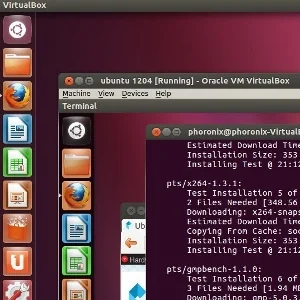QEMU 2.0 Is Piling On Many Features For Early April Debut

Back in November was the last time I wrote about QEMU 2.0 being under development with many features and improvements. That release is about to materialize and with it comes a great deal of changes.
Among the QEMU 2.0 features to look forward to is:
- Support for new ARMv8 instructions.
- AArch64 disassembling / user-mode emulation / KVM system-mode emulation.
- QEMU support for the Canon PowerShot A1100 DIGIC board.
- QEMU support for the Allwinner A10 Cubieboard.
- CPU hot-plugging for QEMU x86 with the Q35 mode.
- Support for QEMU x86 to specify two flash chips.
- Memory layout changes for improved performance.
- Support for migration of Intel MPX registers.
- PCI hot-plugging now supports devices behind a bridge.
- Live snapshot merge support including for iSCSI back-ends.
- Many other QEMU block device improvements.
- New monitoring command improvements.
- TCG code generation improvements.
- Many other bug-fixes and enhancements.
A tentative list of other QEMU 2.0 changes can be found via the QEMU Wiki. The current plan is to officially release QEMU 2.0 in the first week of April. The tentative release schedule can be found on the QEMU mailing list.
For Ubuntu 14.04 LTS users, it looks like QEMU 2.0 might be added to the "Trusty Tahr" Long-Term Support release. Due to the LTS release, it would be great to see this important piece of software used in Linux virtualization found in the April Ubuntu release.
1 Comment

